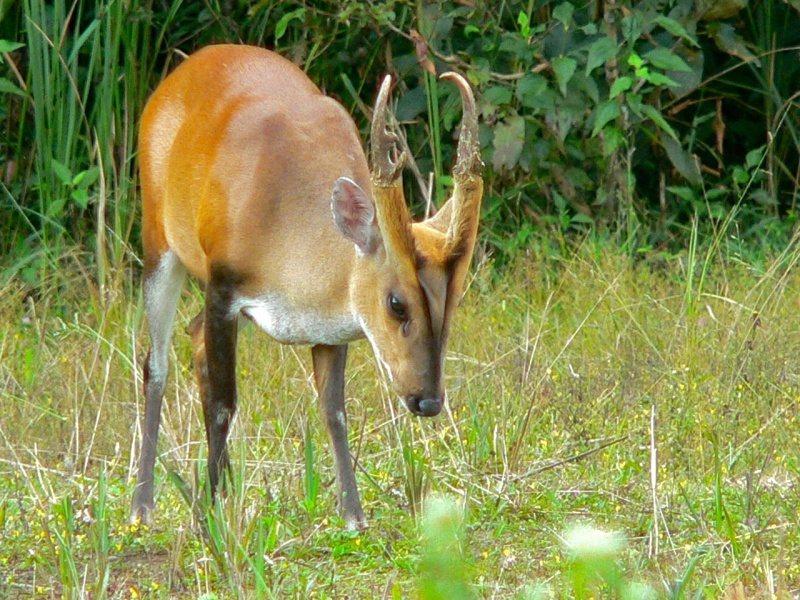Colours
Distinguishing features
It has a short but very soft, thick, dense coat, especially those living in cooler regions. Coloration of the coat changes from dark brown to yellowish and grayish brown depending on the season. The muntjacs' coat is golden tan on the dorsal side and white on the ventral side of the body, the limbs are dark brown to reddish brown, and the face is dark brown. However, the ears have very little hair which barely covers them. Male muntjacs have antlers that are very short, about 1-2 inches, usually consisting of only two or three points at the most and protrude from long body hair covered pedicels on the forehead. Females have tufts of fur and small bony knobs where the antlers are located in males. Males also have slightly elongated upper canines about an inch long that curve slightly outward from the lips and have the capability to inflict serious injury upon other animals or to other members of the population while exhibiting aggression. Males are generally larger than females. (Wikipedia)
Size
- Up to 62 cm (Height)
Synonyms
Distribution and habitat preferences
They are among the most widespread but least known of all mammals in South Asia. It is found in Bangladesh, southern China, northeastern India, Sri Lanka, Nepal, Pakistan, Cambodia, Vietnam, the Malay Peninsula, the Riau Archipelago, Sumatra, Bangka Island, Belitung, Java, Bali, and Borneo. This species is most densely located in Southeast Asia.
It is found in tropical and subtropical deciduous forests, grasslands, savannas, and scrub forests, as well as in the hilly country on the slopes of the Himalayas. They are found at altitudes ranging from sea level up to 3,000m. They never wander far from water.
Males usually have their own territory, which may overlap the territories of a few females but not of another male. (Wikipedia)
Diet
They are classified as omnivores. They are considered both browsers and grazers with a diet consisting of grasses, ivy, prickly bushes, low growing leaves, bark, twigs, herbs, fruit, sprouts, seeds, tender shoots, bird eggs and small warm-blooded animals. They are typically found feeding at the edge of the forest or in abandoned clearings. (Wikipedia)

